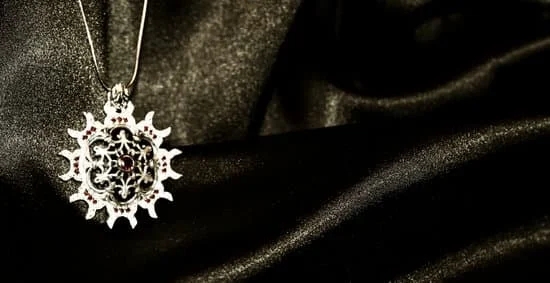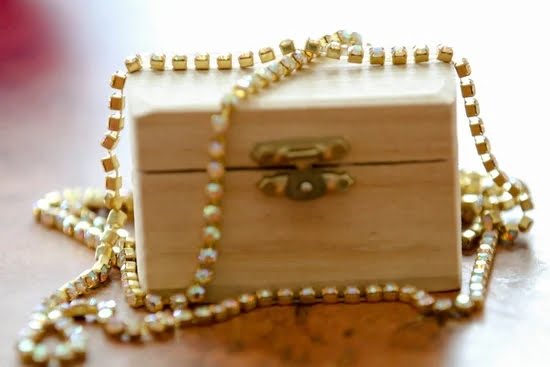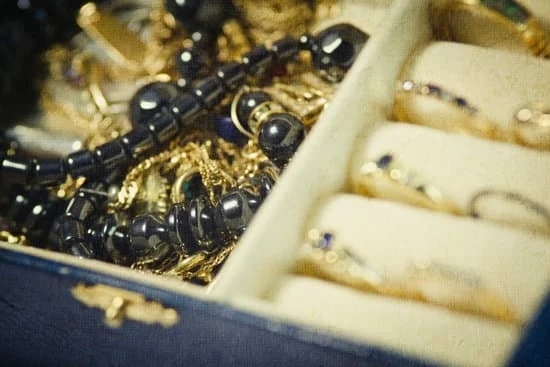The captivating allure and rich history of Middle Eastern gold jewelry have fascinated people around the world for centuries. With its exquisite craftsmanship, intricate designs, and deep cultural significance, this type of jewelry is truly a treasure to behold. From the opulent past of traditional Middle Eastern gold jewelry to the evolving styles and innovations of modern trends, there is so much to explore and appreciate in this timeless art form.
Middle Eastern gold jewelry offers a glimpse into a bygone era of luxury and splendor. It has long been associated with status, wealth, and prestige, reflecting the grandeur of ancient civilizations like Egypt, Mesopotamia, and Persia. The craftsmanship behind these pieces is nothing short of extraordinary, with skilled artisans meticulously handcrafting each piece using techniques that have been passed down through generations.
More than just decorative adornments, Middle Eastern gold jewelry holds deep cultural significance. They often feature symbolic motifs such as flowers, animals, or geometric shapes that convey meanings tied to spirituality, protection, or prosperity. These pieces are also closely associated with various beliefs and traditions in the region’s diverse cultures, serving as talismans or amulets believed to bring good luck or ward off evil spirits.
Join us on a captivating journey as we dive deeper into the artistry and craftsmanship behind Middle Eastern gold jewelry. From understanding its cultural significance to exploring the diverse styles and designs that capture its essence, you will gain a renewed appreciation for this timeless art form that continues to dazzle the world today.
Traditional Middle Eastern Gold Jewelry
Middle Eastern gold jewelry has a long and storied history, steeped in tradition and luxury. For centuries, the region has been renowned for its exquisite craftsmanship and intricate designs, creating dazzling pieces that have captivated people worldwide. Traditional Middle Eastern gold jewelry offers a glimpse into an opulent past filled with cultural significance, symbolism, and a deep appreciation for artistry.
One of the most recognizable features of traditional Middle Eastern gold jewelry is its ornate and intricate designs. Each piece is carefully handcrafted by skilled artisans, often using ancient techniques passed down through generations. The mastery of these techniques ensures that every detail is meticulously crafted to perfection. Filigree work, a delicate form of metalworking involving twisting and curling fine threads of gold wire, is particularly prominent in many Middle Eastern jewelry designs.
Another key characteristic of traditional Middle Eastern gold jewelry is its bold use of geometric shapes. Squares, circles, triangles, and other geometric patterns are incorporated into the designs to create visually striking pieces that are both timeless and unique. This emphasis on geometry reflects the region’s rich architectural heritage and Islamic art traditions.
Moreover, traditional Middle Eastern gold jewelry carries deep cultural significance. It often serves as a symbol of wealth, status, and protection. Many pieces are adorned with charms or symbols believed to bring good luck or ward off evil spirits. For example, the “hand of Fatima” or “Hamsa” is a popular motif found in Middle Eastern jewelry which represents protection against the evil eye.
| Traditional Middle Eastern Gold Jewelry: A Glimpse into the Opulent Past |
|---|
| – Exquisite craftsmanship and intricate designs |
| – Bold use of geometric shapes reflecting architectural heritage |
| – Deep cultural significance as symbols of wealth, status, and protection |
Cultural Significance of Middle Eastern Gold Jewelry
The cultural significance of Middle Eastern gold jewelry encompasses a rich tapestry of symbolism, beliefs, and traditions that have been passed down through generations. In Middle Eastern cultures, gold jewelry holds deep meaning and is often associated with wealth, power, and spirituality.
Symbolism is an integral part of Middle Eastern gold jewelry design. Many motifs are used to convey specific messages or represent cultural values and traditions. For example, the Evil Eye symbol is commonly found in Middle Eastern jewelry as a talisman to ward off evil spirits and protect the wearer from harm. Other popular symbols include the Hamsa Hand, which is believed to bring prosperity and good fortune, and the Tree of Life, symbolizing strength and longevity.
In addition to symbolism, gold jewelry also carries strong spiritual significance in the Middle East. Gold is often seen as a divine metal that connects humans with higher realms. It is believed to possess healing properties and bring positive energy into one’s life. This spiritual belief in the power of gold has led to its use in religious ceremonies, such as weddings and other special occasions.
Middle Eastern gold jewelry also plays a significant role in cultural traditions. It is customary for families to pass down heirloom pieces from one generation to another, symbolizing continuity and preserving family history. These cherished pieces often become part of important rituals such as weddings or birth celebrations.
To better understand the cultural significance of Middle Eastern gold jewelry, it is important to delve into specific examples from different regions within the Middle East. Each region has its own unique customs and traditions that shape the artistry and symbolism behind their gold jewelry designs.
| Symbol | Meaning |
|---|---|
| Evil Eye | Talisman for protection against evil spirits |
| Hamsa Hand | Brings prosperity and good fortune |
| Tree of Life | Symbolizes strength and longevity |
The Art of Craftsmanship
The art of crafting Middle Eastern gold jewelry is a highly specialized skill that has been passed down through generations. The intricate designs and attention to detail are what make these pieces truly unique and captivating. In this section, we will explore the techniques and skills behind the creation of these exquisite pieces.
Lost-Wax Casting
One of the primary techniques used in crafting Middle Eastern gold jewelry is lost-wax casting. This age-old technique involves creating a model of the desired piece in wax, which is then encased in a mold made of plaster or clay. The wax is melted away, leaving behind a cavity that can be filled with molten gold. Once the metal solidifies, the mold is broken to reveal the final piece.
Filigree Work
Filigree work is another hallmark of Middle Eastern gold jewelry craftsmanship. This delicate technique involves meticulously shaping thin wires or threads of gold into intricate patterns and motifs. These filigree designs are then fused together or soldered onto the base piece to create an incredibly detailed and ornate finish.
Granulation
Granulation is a technique that involves meticulously arranging tiny granules of gold onto a surface to create intricate patterns or designs. These granules are often applied using heat and pressure, resulting in a seamless integration with the base metal. The precision required for this technique showcases the exceptional skill level of Middle Eastern gold jewelry craftsmen.
Engraving and Embossing
Engraving and embossing are techniques used to add depth and texture to Middle Eastern gold jewelry pieces. Skilled artisans use finely pointed tools to etch elaborate designs onto the surface, creating stunning patterns and motifs. Embossing, on the other hand, involves raising certain areas of the metal by hammering from behind, giving it a three-dimensional effect.
The artistry and craftsmanship behind Middle Eastern gold jewelry is a true testament to the rich heritage and traditions of the region. These techniques are an integral part of creating exquisite pieces that continue to captivate people around the world.
Diverse Styles and Designs
The Middle East is known for its rich cultural diversity, and this is reflected in the wide range of styles and designs found in Middle Eastern gold jewelry. From intricate filigree work to bold geometric patterns, Middle Eastern gold jewelry offers a multitude of options for those seeking unique and exquisite pieces.
One of the most distinct styles in Middle Eastern gold jewelry is the use of Arabic calligraphy. This traditional art form involves inscribing verses from the Quran or other religious texts onto jewelry pieces. The delicate curves and strokes of the calligraphy add an elegant touch to the gold jewelry, making it both visually stunning and deeply meaningful.
Another popular style in Middle Eastern gold jewelry is the use of nature-inspired motifs. Flowers, leaves, and animals are often incorporated into designs, with each symbol carrying its own symbolic significance. For example, roses are associated with love and beauty, while peacocks symbolize immortality. These motifs not only add visual appeal but also reflect the deep connection between nature and spirituality in Middle Eastern culture.
Geometric patterns are also commonly seen in Middle Eastern gold jewelry. Intricate lattice-work designs, such as arabesques or mandalas, are created using precise calculations and skilled craftsmanship. These geometric patterns not only create a mesmerizing visual effect but also represent unity and harmony – important values deeply embedded in Middle Eastern tradition and culture.
Whether you prefer traditional or contemporary designs, minimalistic or extravagant styles, you can find an extensive range of options within Middle Eastern gold jewelry. From delicate necklaces adorned with intricate filigree to statement rings featuring bold gemstones, there is truly something for everyone’s taste. The diverse styles and designs of Middle Eastern gold jewelry make it a timeless choice that allows individuals to express their personal style while honoring a rich cultural heritage.
Precious Gemstones in Middle Eastern Gold Jewelry
Middle Eastern gold jewelry has long been renowned for its opulence and intricate designs. One of the key elements that adds to its allure is the use of precious gemstones. These gemstones not only add vibrant colors to the jewelry but also enhance the overall brilliance and beauty. In this section, we will explore the significance of gemstones in Middle Eastern gold jewelry and delve into some of the popular gemstones used in these exquisite pieces.
Gemstones have a deep cultural and symbolic meaning in Middle Eastern societies. They are believed to possess healing properties, bring good luck, and ward off evil spirits. Each gemstone holds different meanings and associations, making them an important part of the overall design and story behind a piece of jewelry.
Some of the most commonly used gemstones in Middle Eastern gold jewelry include:
– Rubies: Known as the king of gemstones, rubies signify passion, love, and courage. They are often featured as center stones in rings or pendants.
– Emeralds: Symbolizing fertility, rebirth, and youthfulness, emeralds are highly cherished in Middle Eastern culture. They are popularly used as accents or center stones in various types of jewelry.
– Sapphires: Valued for their deep blue color, sapphires represent wisdom, loyalty, and nobility. They are frequently incorporated into earrings or bracelets to add a touch of elegance.
In addition to these three gemstones, other sought-after gems include pearls, amethysts, topaz, and onyx. The combination of these stones with carefully crafted gold settings creates breathtaking pieces that captivate with their beauty.
Gemstone-inlaid Middle Eastern gold jewelry is also recognized for its exceptional craftsmanship. Skilled artisans meticulously select each stone for its color intensity and unique characteristics before expertly setting it into place using age-old techniques. This intricate craftsmanship ensures that the gemstones are securely held and prominently displayed to maximize their brilliance.
Middle Eastern gold jewelry with precious gemstones continues to be highly desirable around the world. Its combination of rich history, cultural significance, and exquisite craftsmanship makes it a treasured possession for many. Whether adorned with rubies, emeralds, sapphires, or other gems, these jewelry pieces effortlessly add color and brilliance to any ensemble.
| Gemstone | Meaning and Symbolism |
|---|---|
| Rubies | Passion, love, courage |
| Emeralds | Fertility, rebirth, youthfulness |
| Sapphires | Wisdom, loyalty, nobility |
Famous Middle Eastern Gold Jewelry Brands
Middle Eastern gold jewelry is not only known for its exquisite beauty, but also for the master craftsmen who create these stunning pieces. Throughout the region, there are several famous brands that have made a name for themselves with their exceptional craftsmanship and unique designs. These brands not only carry on the legacy of traditional Middle Eastern gold jewelry, but also embrace modern trends and innovations to cater to a global audience.
Damas Jewellery
Damas Jewellery is one of the most renowned and respected names in Middle Eastern gold jewelry. Established in 1907, this brand has a long history of crafting breathtaking pieces that showcase intricate detailing and exceptional craftsmanship. With a commitment to excellence, Damas Jewellery continues to create timeless designs that combine traditional techniques with contemporary elements.
Mouawad
Mouawad is another prominent Middle Eastern gold jewelry brand that has gained international recognition. Founded in Lebanon in 1890, this family-owned business has become synonymous with luxury and opulence. Mouawad is known for its elaborate and finely-crafted pieces that incorporate precious gemstones such as diamonds, rubies, and emeralds. With their commitment to perfection and attention to detail, Mouawad continues to be a favorite among discerning customers worldwide.
Taiba Dubai
Taiba Dubai is a well-established brand based in the United Arab Emirates (UAE) that specializes in high-quality gold jewelry. With over forty years of experience, Taiba Dubai has gained a loyal customer base by offering beautifully designed pieces that range from intricate necklaces and bracelets to elegant rings and earrings. Their commitment to quality materials combined with modern design sensibilities have earned them a reputation as one of the leading brands in the region.
These are just a few examples of the famous Middle Eastern gold jewelry brands that deserve recognition for their exceptional craftsmanship and dedication to preserving the art of gold jewelry making. Whether you’re looking for a statement piece for a special occasion or a timeless everyday accessory, these brands offer a wide range of designs to suit every taste.
By celebrating the masters of the craft, we can appreciate the rich history and cultural significance that Middle Eastern gold jewelry holds.
Modern Trends and Innovations
Middle Eastern gold jewelry has a rich history and a timeless allure that continues to captivate people around the world. While traditional designs have their own charm, Middle Eastern gold jewelry also keeps up with modern trends and innovations. This section will explore how this ancient craft stays relevant in today’s ever-evolving world.
One way Middle Eastern gold jewelry keeps up with the times is by incorporating contemporary elements into classic designs. For example, many designers are experimenting with different metals such as rose gold or white gold, giving a fresh update to traditional yellow gold pieces. This allows for more versatility and options for those who want to incorporate Middle Eastern jewelry into their everyday style.
Another modern trend in Middle Eastern gold jewelry is the fusion of traditional craftsmanship with modern techniques and materials. Designers are now using 3D printing technology to create intricate molds and patterns, making it easier to replicate delicate designs and experiment with innovative shapes. Additionally, many artisans are combining precious gemstones with gold, creating unique pieces that appeal to a wider range of styles.
In recent years, there has also been a growing demand for sustainable and ethical jewelry. Middle Eastern goldsmiths are embracing this trend by using recycled gold or ethically sourced gemstones in their creations. By prioritizing sustainability, they not only attract conscious consumers but also contribute to a more environmentally friendly industry.
To summarize, Middle Eastern gold jewelry remains relevant in today’s world through various modern trends and innovations. From incorporating contemporary elements into traditional designs to embracing new techniques and materials, this ancient craft continues to evolve while maintaining its timeless elegance. Whether you prefer classic or more avant-garde styles, there is surely a piece of Middle Eastern gold jewelry that will catch your eye and add a touch of regal beauty to any outfit.
Caring for Your Middle Eastern Gold Jewelry
Taking care of your Middle Eastern gold jewelry is essential to maintain its beauty and longevity. These exquisite pieces are not only valuable but also hold significant cultural and sentimental value. By following a few simple tips and tricks, you can ensure that your Middle Eastern gold jewelry remains stunning for generations to come.
Storage
Proper storage is crucial in preserving the quality of your Middle Eastern gold jewelry. It is recommended to store each piece separately in a soft pouch or cloth to prevent scratches. Avoid exposing the jewelry to sunlight or extreme temperatures as it can cause discoloration or damage.
Cleaning
Regular cleaning is necessary to maintain the shine and luster of your Middle Eastern gold jewelry. Mix a few drops of mild dish soap with warm water and gently scrub the piece using a soft toothbrush or cloth. Afterward, rinse it thoroughly with clean water and pat dry with a soft towel. Avoid using harsh chemicals or abrasive materials that may scratch or tarnish the surface.
Maintenance
To ensure the longevity of your Middle Eastern gold jewelry, periodic maintenance is essential. Regularly inspect each piece for loose gemstones, worn prongs, or any signs of damage. It is advisable to take it to a professional jeweler for inspection at least once a year, who can also perform professional cleaning and any necessary repairs.
By following these tips for caring for your Middle Eastern gold jewelry, you can ensure that its beauty lasts for years to come. Treating these precious pieces with love and attention will not only preserve their value but also allow you to continue enjoying their timeless elegance and cultural significance.
Where to Find Authentic Middle Eastern Gold Jewelry
Middle Eastern gold jewelry is renowned for its exquisite craftsmanship, intricate designs, and rich cultural symbolism. If you’re looking to add a touch of elegance and history to your collection, there are several top destinations and online sources where you can find authentic Middle Eastern gold jewelry.
One of the best places to find authentic Middle Eastern gold jewelry is in the bustling markets and souks of countries like Saudi Arabia, Egypt, and Turkey. These markets offer a treasure trove of traditional pieces that are handcrafted by skilled artisans using ancient techniques passed down through generations. From ornate necklaces and bracelets to intricately designed earrings and rings, these markets are a haven for those seeking authentic Middle Eastern gold jewelry.
For those who prefer the convenience of online shopping, there are several reputable online sources that offer a wide range of authentic Middle Eastern gold jewelry. Websites like AlHajj Jewelry, Habib Jewels, and Zameer Kassam Fine Jewelry specialize in offering high-quality pieces that capture the essence of Middle Eastern design. These websites often have detailed descriptions and high-resolution images of each piece, allowing customers to make an informed decision before making a purchase.
When purchasing Middle Eastern gold jewelry online or from local vendors abroad, it’s important to ensure its authenticity. Look for reputable sellers with positive reviews and a proven track record in selling genuine Middle Eastern gold jewelry. Additionally, if possible, ask for certifications or guarantees of authenticity to ensure that you are getting a genuine piece.
Conclusion
In conclusion, Middle Eastern gold jewelry continues to captivate the world with its timeless elegance. Through its rich history, cultural significance, and exquisite craftsmanship, this jewelry represents not only a beautiful accessory but also a symbol of tradition and deep-rooted beliefs. The diverse styles and designs, along with the incorporation of precious gemstones, add further allure and brilliance to these pieces.
The artistry and skill behind Middle Eastern gold jewelry are truly remarkable. Craftsmen have perfected techniques that have been passed down through generations, resulting in intricate and meticulous designs that stand the test of time. From filigree work to granulation and enameling, these techniques are not only impressive but also highlights of the art form.
Furthermore, Middle Eastern gold jewelry has managed to keep up with modern trends and innovations without compromising its authenticity. Designers continue to create contemporary pieces that appeal to a wide range of consumers while still maintaining the essence of this age-old tradition. Whether it’s experimenting with new materials or incorporating unique design elements, they successfully blend the old with the new.
Finding authentic Middle Eastern gold jewelry may seem daunting, but there are numerous top destinations and online sources that offer genuine pieces. Whether it’s visiting famous souks in cities like Istanbul or Dubai or exploring reputable online platforms specializing in Middle Eastern jewelry, enthusiasts can find a treasure trove of options.
In conclusion, Middle Eastern gold jewelry stands as a testament to centuries-old traditions combined with artistic innovation. Its allure transcends borders and cultures as people from around the world appreciate its beauty and significance. By cherishing these exquisite pieces and passing down the knowledge of their creation, we ensure that Middle Eastern gold jewelry will continue to enchant generations for years to come.

Welcome to my jewelry blog! My name is Sarah and I am the owner of this blog.
I love making jewelry and sharing my creations with others.
So whether you’re someone who loves wearing jewelry yourself or simply enjoys learning about it, be sure to check out my blog for insightful posts on everything related to this exciting topic!





